Primary Rainbows
Important update: These pages have moved to their own domain at https://rainbowspec.observer, where their information, organization, and graphics have been significantly improved! This page is replaced by my new primary rainbow page.
Relationship to the Viewer

A rainbow is not in a static position, rather it depends on the viewers angle with the sun (or other light source). The sun, the viewer, and the antisolar point lie on the same line, with the viewer in the middle. A primary rainbow will always oppose the sun.
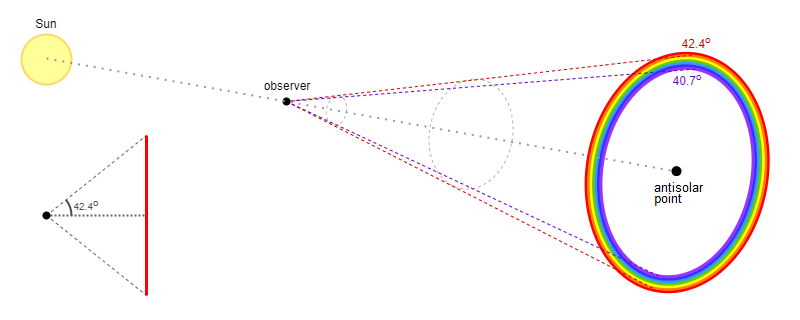
In these diagrams, the center of the rainbow is the "antisolar point," which is also the same place the head of the viewers shadow would be. Essentially an infinite cone is formed with the viewer at the point and the rainbow as the surface of the cone around the antisolar line as an axis. The small diagram shows the cone on its side, illustrating how the outer surface of the cone makes a 42.4 degree angle with the central axis. This 42.4 degrees is on the very outside edge of the rainbow, the red band; violet is at 40.7 degrees. Each wavelength/color has its own cone, with red being the largest and decreasing in size until the smallest cone, violet.
A rainbow is also not a specific distance away from the viewer, as long as there are water droplets on the cone's surface, a rainbow can be formed whether the droplets are feet or miles away. Their distance does not impact the appearance of the rainbow.Rainbow Cone - AtOpt
Considering the observer is a key component to the rainbow, each person will see a rainbow made by different water droplets (as the observers each make a different cone).Rainbow Cone - AtOpt The further away the droplets are, the less obvious this is however.
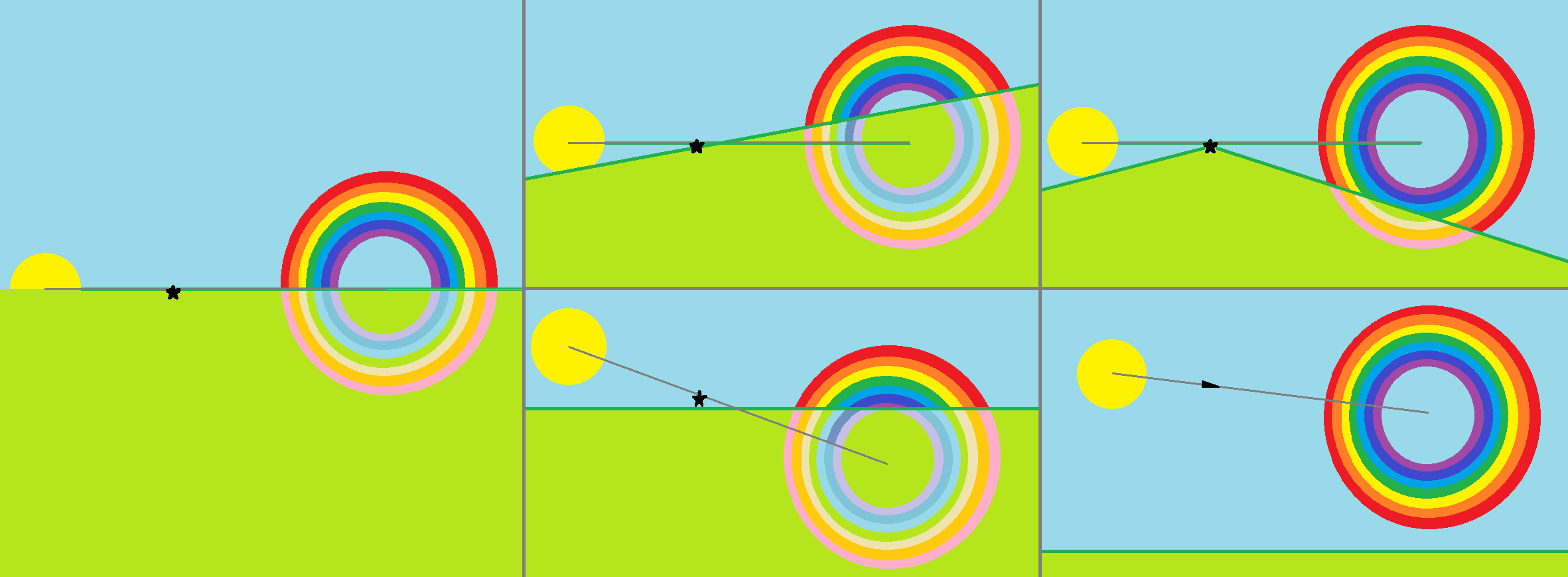
Rainbows are full circles, but the entire circle is rarely seen due to the relationship between the sun and viewer, causing the rest of the rainbow to be hidden by the ground (more accurately, there are no raindrops between the viewer and the visible ground). However, the amount of rainbow visible can increase if the sun is lower to the horizon and/or the viewer is higher (a full circle can be seen from a plane). The reverse is also true, the higher the sun and/or the lower the viewer, the less the circle can be seen. Check out my rainbow gallery for full circle rainbow photos!
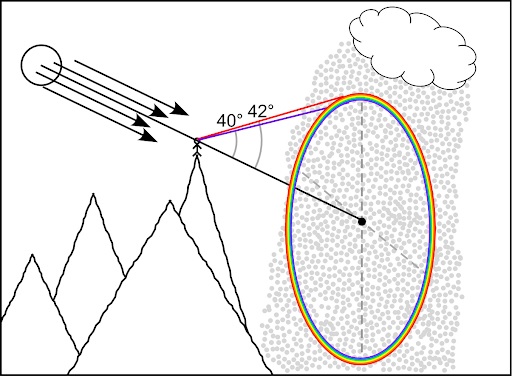
Here is a much better diagram by Lourdes B. Avilés in Invisible Rainbows, showing how at a high vantage point, a viewer can see an entire rainbow.
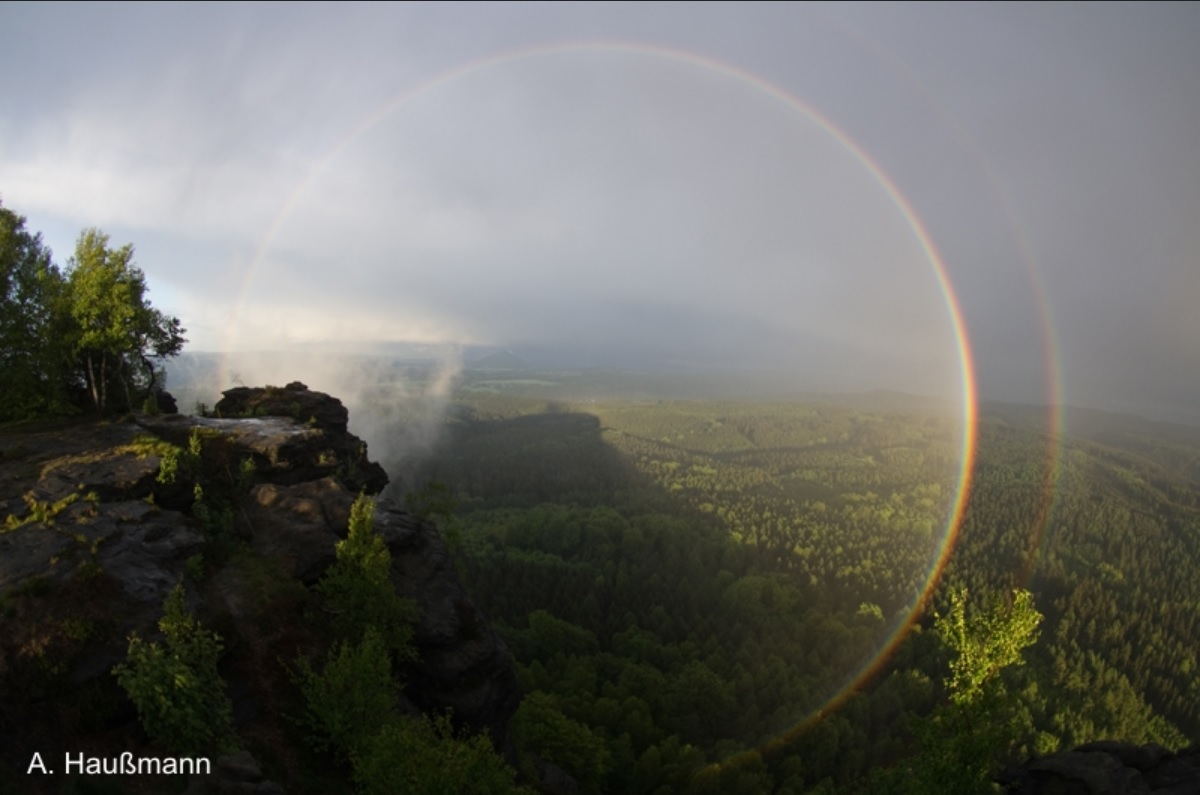
Here is a real life view of what a rainbow from a mountain top looks like (from Alexander Haussmann)! Part of the mountain is covering the raindrops, but a lot is visible!
Caustics
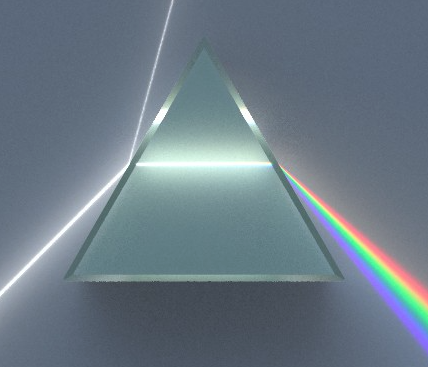
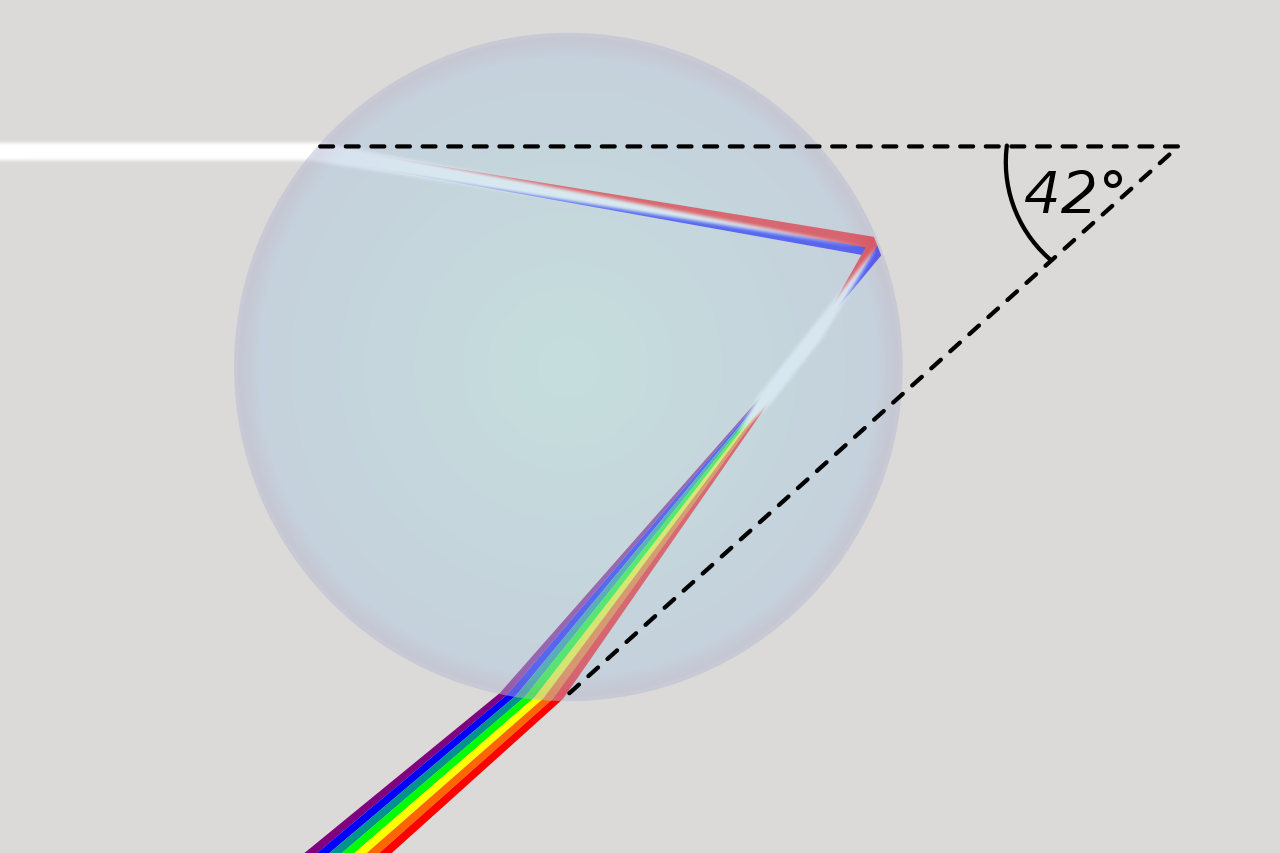
Light does infact pass straight through a water drop like it does through a prism but the shape of the drop does not allow the dispersed light to form a rainbow, despite the droplet acting as a prism. These rays of light wash each other out, creating extra brightness around the sun (zeroth order glow).Rainbow Caustics
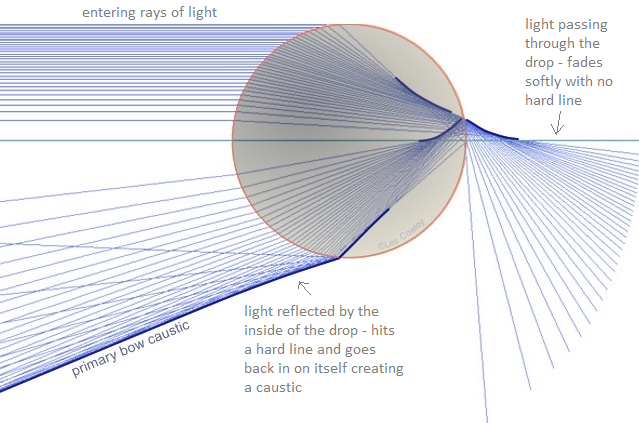
Light rays passing through the drop can enter from any point of the drop facing the sun, and will exit so that they all flare outwards from each other without hitting any boundaries. Light that is reflected by the inside surface of the drop reflects back and they start to flare from each other on exit, until they hit a hard line, and start to cross over each other.
A reflection within the drop is important to create a caustic. A caustic is a physics phenonema describing distinct areas or lines where light rays are densely packed. Caustics are frequently observed in clear water on a sunny day, where light collects into thin shimmery lattices on the bottom of the pool.

Here we can see the hard line where the reflected rays will not cross, where light collects in a caustic. This is also called the minimum angle of deviation. These caustics result in a 3D cone for each color. Of course looking at this cone head on through the central axis, we just see it as a circle.
Each wavelenghth of light creates a caustic at a slightly different angle from the incident light, allowing the larger angles (red) to be seen outside of the smaller angles (violet). How Rainbows Form
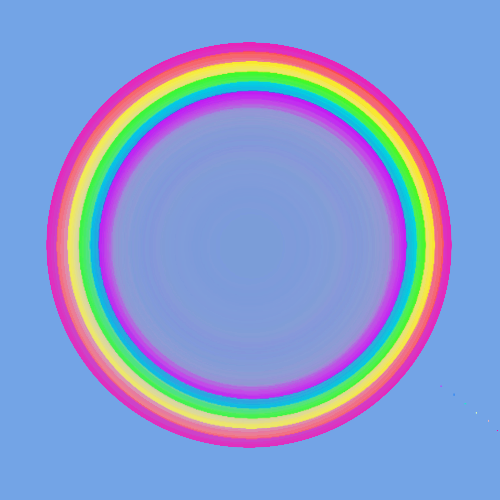
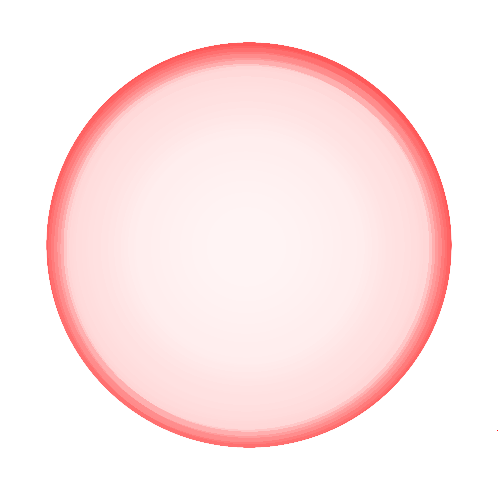
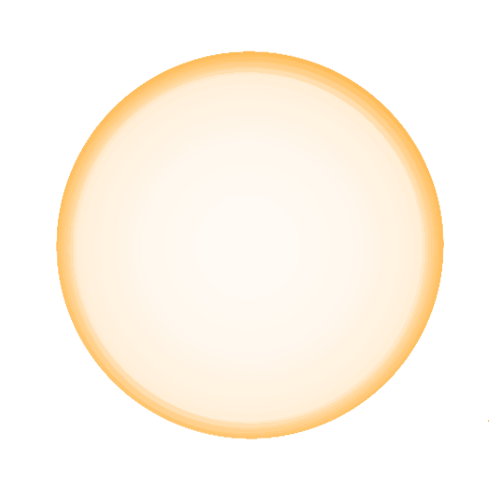
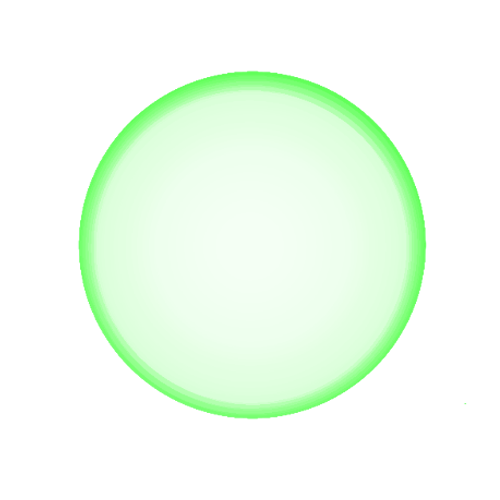



Each wavelength will produce light that is very faint around the antisolar point (central axis), concentrating until the edge of the cone, the caustic where it is a very intense thin line. And since each wavelength creates a different size caustic, the smaller colors show through the transparent areas of the larger colors!